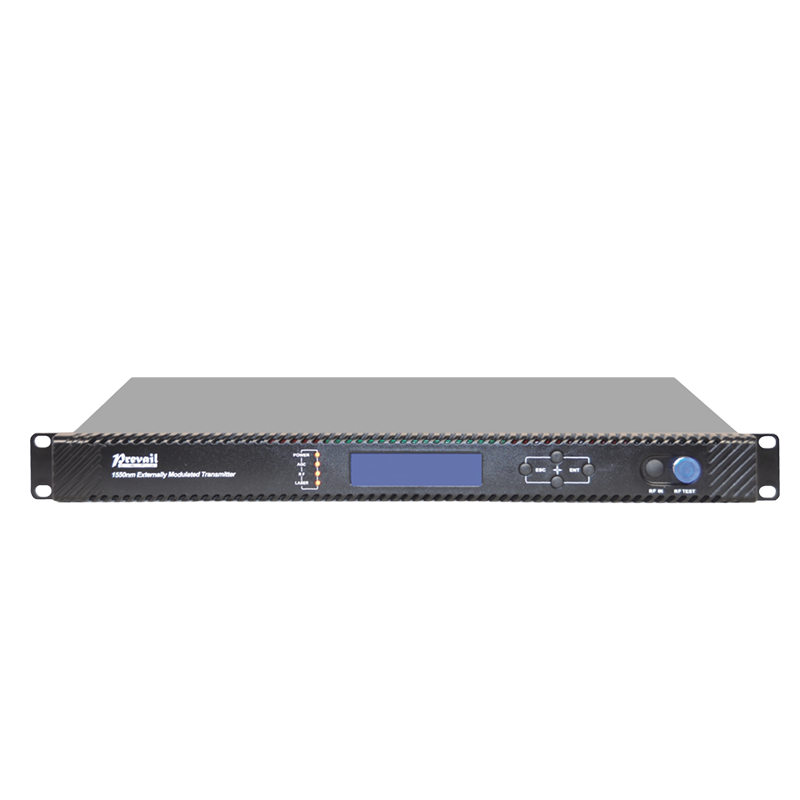1550nm Optical Transmitter: Pioneering High-Speed Data Networks for the Digital Age
As the digital age accelerates, the demand for faster, more reliable data networks continues to grow. At the heart of this transformation lies the 1550nm optical transmitter, a cutting-edge technology that has redefined the boundaries of fiber optic communication. By combining precision engineering with innovative design, these transmitters are paving the way for next-generation connectivity solutions.
Enabling Breakthroughs in Data Transmission
At its core, the 1550nm optical transmitter excels in delivering high-speed data transmission with minimal loss. This capability is rooted in its operation at the 1550nm wavelength, which aligns perfectly with the low-loss characteristics of silica-based optical fibers. As a result, these transmitters can transmit vast amounts of data over extended distances without significant degradation in signal quality.

For example, in data centers—the nerve centers of the digital economy—1550nm optical transmitters facilitate lightning-fast communication between servers and storage systems. Their ability to support terabit-level data rates ensures that businesses can process and analyze information in real time, driving innovation and competitiveness. Similarly, in 5G networks, these transmitters enable backhaul connections that link cell towers to core networks, ensuring seamless mobile experiences for users.
The adaptability of 1550nm transmitters also extends to emerging technologies like smart cities and the Internet of Things (IoT). By providing robust, high-capacity links, they empower municipalities and enterprises to deploy advanced sensors, cameras, and devices that rely on uninterrupted connectivity. This versatility positions 1550nm transmitters as enablers of the smart, interconnected future.
Supporting Scalability and Innovation
Another standout feature of 1550nm optical transmitters is their ability to support scalable and innovative network architectures. As global data consumption skyrockets, telecommunications providers must continually expand their infrastructure to meet demand. The inherent flexibility of 1550nm transmitters makes them an ideal choice for building future-proof networks.
For instance, Dense Wavelength Division Multiplexing (DWDM) leverages the 1550nm wavelength to pack dozens—or even hundreds—of channels onto a single fiber strand. This multiplexing capability allows operators to multiply the capacity of their networks without laying additional cables, significantly reducing deployment costs. Moreover, advances in coherent optical technology have unlocked new possibilities for 1550nm transmitters, enabling them to transmit complex modulated signals with unprecedented clarity and speed.
Sustainability is another area where 1550nm optical transmitters shine. By optimizing energy usage and reducing material waste, these devices contribute to greener telecommunications practices. Their compatibility with renewable energy sources, such as solar-powered repeaters, further enhances their eco-friendly credentials.
Bridging the Gap Between Legacy and Next-Gen Systems
The 1550nm optical transmitter also plays a crucial role in bridging the gap between legacy systems and next-generation technologies. Many existing fiber optic networks were initially designed to operate at the 1310nm wavelength, but upgrading to 1550nm transmitters allows operators to unlock higher performance without overhauling their infrastructure. This backward compatibility ensures a smooth transition to advanced systems, minimizing disruptions and maximizing ROI.
Additionally, the integration of software-defined networking (SDN) and network function virtualization (NFV) with 1550nm transmitters is transforming how networks are managed. These technologies enable dynamic allocation of resources, allowing operators to optimize bandwidth and prioritize mission-critical applications in real time. Such innovations not only enhance efficiency but also pave the way for smarter, more adaptive networks.
The 1550nm optical transmitter exemplifies the perfect blend of tradition and innovation, honoring the past while embracing the future. Its ability to deliver high-speed, reliable, and scalable data transmission makes it a catalyst for progress in the digital age. As industries continue to evolve, 1550nm transmitters will undoubtedly remain at the forefront of technological advancement, proving that sometimes the smallest wavelengths can have the biggest impact.

















